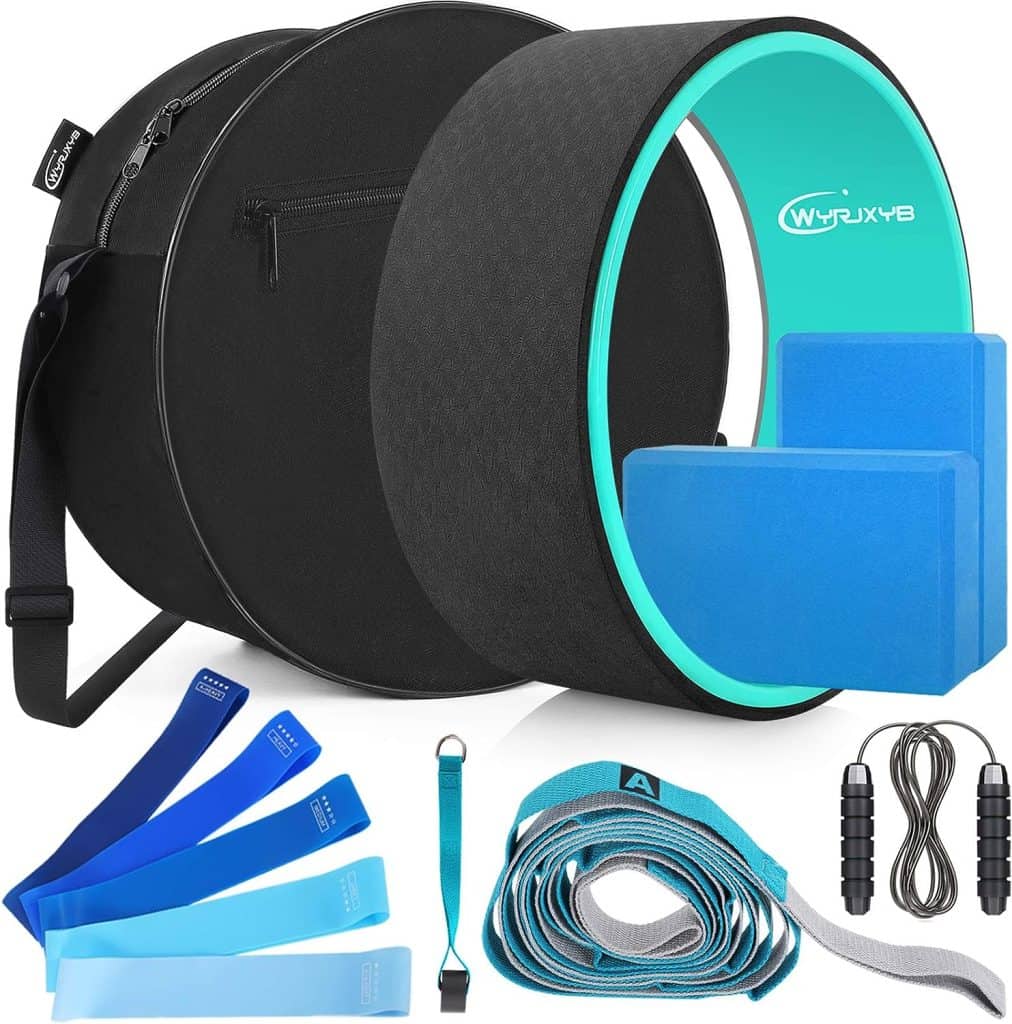Namaste, dear yoga enthusiasts! Today, we embark on a journey to explore an important topic that affects the well-being of our liver: fatty liver disease. As practitioners of yoga, we understand the significance of holistic healing and the interconnectedness of our body, mind, and spirit.
In this article, we delve into the world of fatty liver disease and discover how yoga can play a pivotal role in its management and prevention. Additionally, we introduce you to FattyLiverGuide.com, a comprehensive online resource that combines knowledge and tips for those seeking support on their liver health journey.
Understanding Fatty Liver Disease:
Fatty liver disease is a condition characterized by the accumulation of excess fat in the liver cells. The liver, which plays a crucial role in various metabolic processes, such as filtering toxins from the blood, producing bile, and storing nutrients, can be adversely affected by the presence of excessive fat.
There are two main types of fatty liver disease:
- Non-alcoholic fatty liver disease (NAFLD): This condition occurs in individuals who do not consume excessive amounts of alcohol. NAFLD is commonly associated with obesity, insulin resistance, type 2 diabetes, high cholesterol, and metabolic syndrome.
- Alcoholic fatty liver disease (AFLD): As the name suggests, this condition is primarily caused by excessive alcohol consumption. Prolonged and heavy alcohol intake can lead to fat accumulation in the liver, resulting in inflammation and potential liver damage.
Both NAFLD and AFLD can progress into more severe conditions. Non-alcoholic steatohepatitis (NASH) is a more advanced form of NAFLD characterized by liver inflammation, which can lead to liver fibrosis and cirrhosis. Alcoholic steatohepatitis (ASH) is the inflammatory stage of AFLD and can also progress to cirrhosis if alcohol consumption continues.
Causes and Risk Factors:
While the exact causes of fatty liver disease are not fully understood, several factors contribute to its development:
- Obesity: Excess weight, particularly abdominal obesity, is strongly associated with fatty liver disease. Obesity can lead to insulin resistance, which affects how the liver processes fats and sugars.
- Insulin resistance and metabolic syndrome: Insulin resistance, a condition where the body’s cells become less responsive to insulin, is often seen in individuals with fatty liver disease. Metabolic syndrome, a cluster of conditions including high blood pressure, high blood sugar, excess abdominal fat, and abnormal cholesterol levels, increases the risk of developing fatty liver disease.
- Type 2 diabetes: People with diabetes are more prone to developing fatty liver disease due to insulin resistance and metabolic abnormalities.
- High cholesterol and triglyceride levels: Elevated levels of cholesterol and triglycerides in the blood can contribute to fat accumulation in the liver.
- Excessive alcohol consumption: Alcohol is a major contributor to alcoholic fatty liver disease. Regular and heavy alcohol intake can overwhelm the liver’s ability to metabolize fats, leading to fat accumulation.
- Genetics: Certain genetic factors may increase the likelihood of developing fatty liver disease, although more research is needed to fully understand their role.
Symptoms and Diagnosis:
In its early stages, fatty liver disease often presents no noticeable symptoms. As the condition progresses, symptoms may include:
- Fatigue and weakness
- Abdominal discomfort or pain
- Loss of appetite
- Weight loss
- Jaundice (yellowing of the skin and eyes) in severe cases
Fatty liver disease is typically diagnosed through a combination of medical history assessment, physical examination, blood tests to assess liver function and determine potential underlying causes, and imaging techniques like ultrasound, CT scan, or MRI to visualize fat accumulation in the liver.
The Role of Yoga in Fatty Liver Management:
Yoga, an ancient practice that harmonizes the body, mind, and soul, offers numerous benefits that can positively impact liver health. By incorporating yoga into your lifestyle, you can potentially mitigate the risk factors associated with fatty liver disease and support the healing process.
Let’s explore some of the ways yoga can assist you in nurturing your liver:
- Weight Management: Maintaining a healthy weight is crucial for managing fatty liver disease. Yoga offers a gentle and effective means of shedding excess pounds, promoting overall fitness and well-being. Poses such as Surya Namaskar (Sun Salutation), Warrior poses, and Twists can aid in toning the body, increasing metabolism, and promoting weight loss.
- Stress Reduction: Chronic stress is closely linked to the development and progression of fatty liver disease. Yoga and its breathing techniques, meditation, and mindfulness practices can help reduce stress levels, improve mental clarity, and promote emotional balance. Practices like Anulom Vilom (Alternate Nostril Breathing) and Savasana (Corpse Pose) can calm the nervous system and provide a sense of tranquility.
- Detoxification: Yoga stimulates the body’s natural detoxification processes, aiding in the removal of toxins and waste products. Twisting poses, such as Ardha Matsyendrasana (Half Spinal Twist) and Bharadvajasana (Bharadvaja’s Twist), massage and stimulate the liver, promoting its optimal function and detoxification.
- Improved Circulation: Yoga asanas (poses) and pranayama (breathing exercises) enhance blood circulation, delivering oxygen and nutrients to the liver. Postures like Uttanasana (Standing Forward Bend) and Setu Bandhasana (Bridge Pose) improve blood flow to the abdominal area, nourishing the liver and supporting its regeneration.
Yoga Poses For People With Fatty Liver
Yoga can be a helpful complement to a healthy lifestyle for individuals with fatty liver. It’s important to note that yoga is not a substitute for medical treatment, so it’s crucial to consult with a healthcare professional before starting any new exercise or wellness routine. That being said, here are some yoga poses that may be beneficial for individuals with fatty liver:
- Tadasana (Mountain Pose):
- Promotes good posture and engages the entire body, aiding in overall blood circulation and liver health.
- Trikonasana (Triangle Pose):
- Stretches the sides of the body and engages the core muscles, potentially aiding digestion and stimulating the abdominal organs.
- Paschimottanasana (Seated Forward Bend):
- Stretches the back, hamstrings, and helps in massaging and stimulating the abdominal organs, including the liver and kidneys.
- Bhujangasana (Cobra Pose):
- Strengthens the back muscles and may help in stimulating and massaging the abdominal organs.
- Setu Bandhasana (Bridge Pose):
- Strengthens the back and leg muscles, potentially aiding in improving blood circulation and digestion.
- Marjarasana (Cat-Cow Pose):
- Promotes flexibility in the spine and helps in gentle massaging of the abdominal organs.
- Ardha Matsyendrasana (Half Lord of the Fishes Pose):
- Involves twisting the spine, which can help in improving digestion and stimulating the liver.
- Sarvangasana (Shoulder Stand):
- An inverted pose that may aid in improving blood circulation, including to the liver.
- Balasana (Child’s Pose):
- A restorative pose that promotes relaxation and can be soothing for the body, including the liver.
- Anulom Vilom Pranayama (Alternate Nostril Breathing):
- A breathing technique that may help in calming the mind and reducing stress, which can indirectly benefit liver health.
Always practice yoga poses with proper technique, focusing on gentle movements and deep, mindful breathing.
Introducing FattyLiverGuide.com:
On your journey towards healing and maintaining liver health, it is crucial to have access to reliable information and resources. That’s where FattyLiverGuide.com comes in.
This invaluable website combines knowledge and tips for individuals with liver damage, offering a wealth of information on lifestyle modifications, dietary recommendations, exercise routines, and more.
FattyLiverGuide.com serves as a comprehensive guide, empowering individuals with the knowledge they need to take charge of their liver health and live a fulfilling life.
Conclusion:
Yoga, with its multifaceted benefits, has the potential to play a significant role in managing and preventing fatty liver disease. By incorporating yoga into your daily routine and adopting a holistic approach to well-being, you can support your liver health and embark on a path towards healing. Remember, in your journey towards liver health, Fatty Liver Guide is your trusted companion, providing the guidance and resources you need. Embrace yoga, nourish your liver, and cultivate a harmonious balance within. May your practice bring you peace, vitality, and vibrant liver health.
Note: Remember to consult with a healthcare professional or liver specialist before implementing any lifestyle changes or beginning a new exercise routine, especially if you have pre-existing medical conditions.
Originally posted 2023-07-05 17:15:19.




